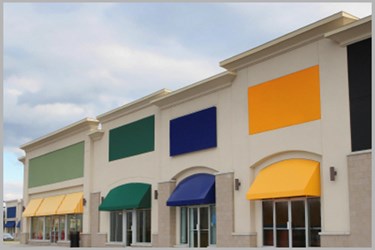Retail IT News for VARs — October 22, 2013

By Anna Rose Welch, Editorial & Community Director, Advancing RNA

This week’s news includes a projection for an increase in holiday spending, retailers turning to technology to help find the right employees, and a study shows consumers are influencing business strategy.
Holiday Sales Expected To Top 2012's
The National Retail Federation expects November and December holiday sales to increase 3.9 percent to $602 billion. This forecast is higher than last year’s actual season sales growth of 3.5 percent and the 10-year average holiday sales growth of 3.3 percent. Positive growth in the U.S. housing market, along with an increase in consumer larger-ticket item purchases are giving retailers hope for the approaching holiday season. The NRF also expects retailers to hire from 720,000 to 780,000 seasonal workers — up from the 720,500 seasonal workers hired in 2012.
Retailers Turn To Technology To Help With Hiring Process
John Challenger, CEO of Challenger, Gray & Christmas says finding the right employees “is a big data problem. Retailers are using technology to target the right people.” According to NBC, retailers hiring for the holidays are turning to high-tech ways of screening new applicants. In-store kiosks help weed out weaker candidates and text managers the names of potential employees. In addition, software for hiring and training new employees has improved over the years, slowing turnover rates, says Cornerstone OnDemand’s CEO Adam Miller.
Consumers Second Only To C-Suite In Influence
MediaPost discusses the results of a new study released by IBM entitled “The Customer Activated Enterprise.” The study interviewed 4,183 CEOs, CFOs, CIOs, and CMOs from 70 countries to examine the ways companies are turning to consumers to strengthen business strategies. According to results, consumers are second only to the c-suite in the level of influence in an organization, and 90 percent of companies are planning to collaborate more extensively with consumers within the next 3 to 5 years. The study also found that technology has risen to the top of CEO agenda, while CMOs hope to put a strong digital strategy in place and CIOs plan to digitize the front office. For an infographic from the study, as well as a link to register for the full study, click here.
Infographic Show Apparel Shoppers’ Use Of Technology
Cotton Lifestyle Monitor published an infographic highlighting online apparel shopping behaviors. The infographic reveals 77 percent of U.S. apparel shoppers use the Internet to compare prices. Shoppers also use the Internet to browse styles (73 percent), look up coupons (71 percent), and read reviews (58 percent) before making an in-store purchase. The survey also found that 87 percent use computers to browse for clothing, with 77 percent eventually buying the item on the computer. Mobile smart phones followed as the second most popular method of browsing (44 percent), compared to 34 percent of consumers that use a tablet to browse. Only 23 percent of consumers actually purchased the clothing items using a smartphone or tablet.
IT Retail Talking Points
Jim Hendrickson for Post & Parcel addresses the growing ship-from-store trend and the challenges and new paths facing retailers as this trend matures. In particular he discusses the new demands on managers and store associates, the evolving use of “intelligent” lockers, and how ship-from-store can turn global shipping into domestic shipping.
Pete Rizzo for PYMNTS interviews Brent Warrington, CEO of SecureNet Payment Systems, about the omnichannel “epidemic.” Warrington argues that retailers must realize “multichannel/omnichannel, whatever you choose to call it, isn’t something that’s created as a new way to monetize the payments industry. This is consumer behavior.” A podcast featuring questions about how SecureNet Payment Systems handles questions about mobile and solves merchants’ problems is available at the end of the interview.
Convenience Store Decisions profiled a recent study completed by the NRF finding that retailers have passed savings from swipe fee reforms to consumers. In doing so, retailers helped boost spending and increased job creation in 2012. However, the study also showed that more money could have returned to consumers if the swipe fee had been set lower, as directed by Congress. According to the report, retailers saved a total of $8.5 billion in 2012 because of the cap on swipe fees and created 37, 501 new jobs. Also, 69 percent — $5.87 billion — of those savings were passed to consumers through lower prices. Had the cap been set at the proposed 12 cents per transaction rather than 21 cents, savings would have equaled $12.5 billion and roughly 55,000 jobs would have been created in 2012. The original report titled “The Costs and Benefits of Half a Loaf: The Economic Benefits of Recent Regulation and Debit Card Interchange Fees” can be found here.
